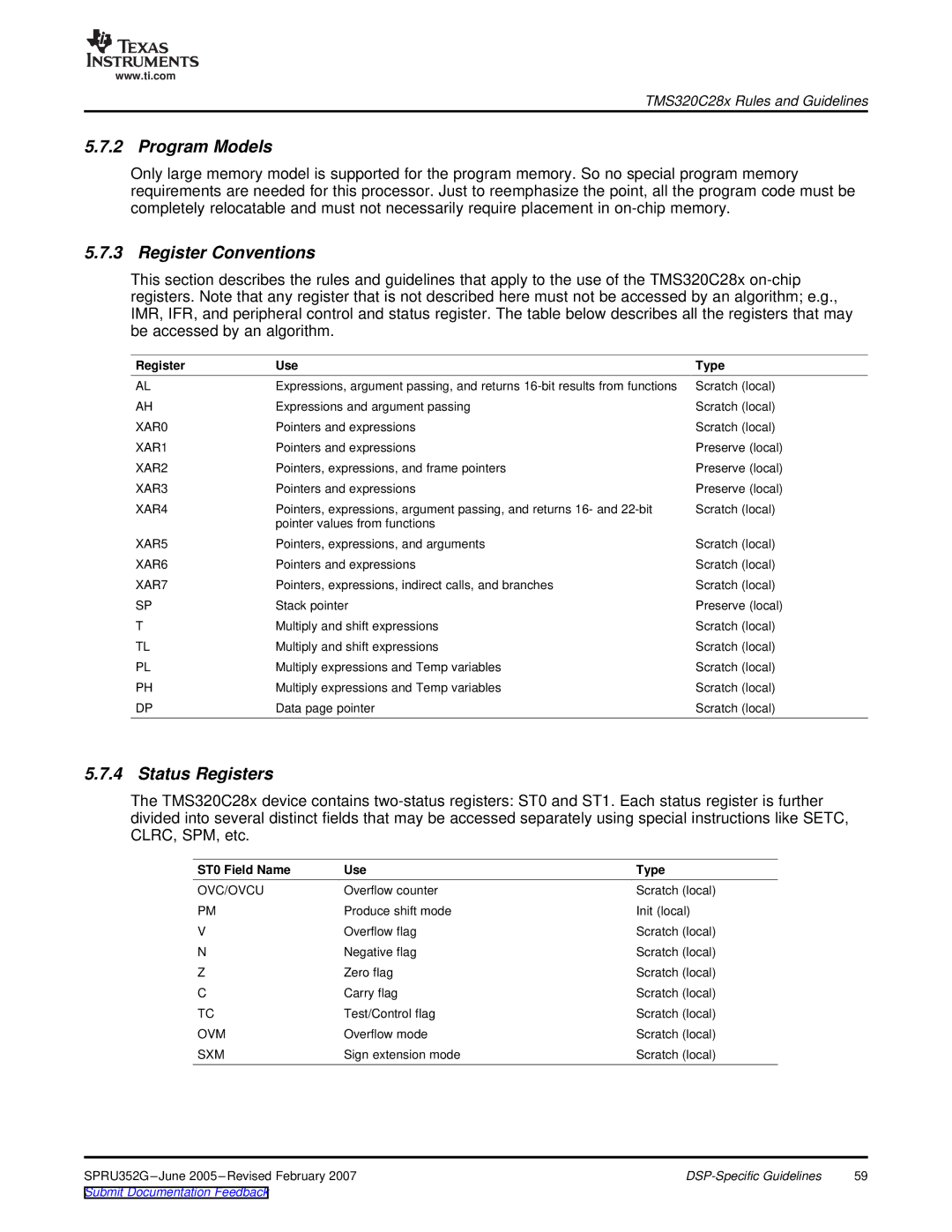
www.ti.com
TMS320C28x Rules and Guidelines
5.7.2 Program Models
Only large memory model is supported for the program memory. So no special program memory requirements are needed for this processor. Just to reemphasize the point, all the program code must be completely relocatable and must not necessarily require placement in
5.7.3 Register Conventions
This section describes the rules and guidelines that apply to the use of the TMS320C28x
Register | Use | Type |
AL | Expressions, argument passing, and returns | Scratch (local) |
AH | Expressions and argument passing | Scratch (local) |
XAR0 | Pointers and expressions | Scratch (local) |
XAR1 | Pointers and expressions | Preserve (local) |
XAR2 | Pointers, expressions, and frame pointers | Preserve (local) |
XAR3 | Pointers and expressions | Preserve (local) |
XAR4 | Pointers, expressions, argument passing, and returns 16- and | Scratch (local) |
| pointer values from functions |
|
XAR5 | Pointers, expressions, and arguments | Scratch (local) |
XAR6 | Pointers and expressions | Scratch (local) |
XAR7 | Pointers, expressions, indirect calls, and branches | Scratch (local) |
SP | Stack pointer | Preserve (local) |
T | Multiply and shift expressions | Scratch (local) |
TL | Multiply and shift expressions | Scratch (local) |
PL | Multiply expressions and Temp variables | Scratch (local) |
PH | Multiply expressions and Temp variables | Scratch (local) |
DP | Data page pointer | Scratch (local) |
5.7.4 Status Registers
The TMS320C28x device contains
ST0 Field Name | Use | Type |
OVC/OVCU | Overflow counter | Scratch (local) |
PM | Produce shift mode | Init (local) |
V | Overflow flag | Scratch (local) |
N | Negative flag | Scratch (local) |
Z | Zero flag | Scratch (local) |
C | Carry flag | Scratch (local) |
TC | Test/Control flag | Scratch (local) |
OVM | Overflow mode | Scratch (local) |
SXM | Sign extension mode | Scratch (local) |
SPRU352G | 59 | |
Submit Documentation Feedback |
|
|
